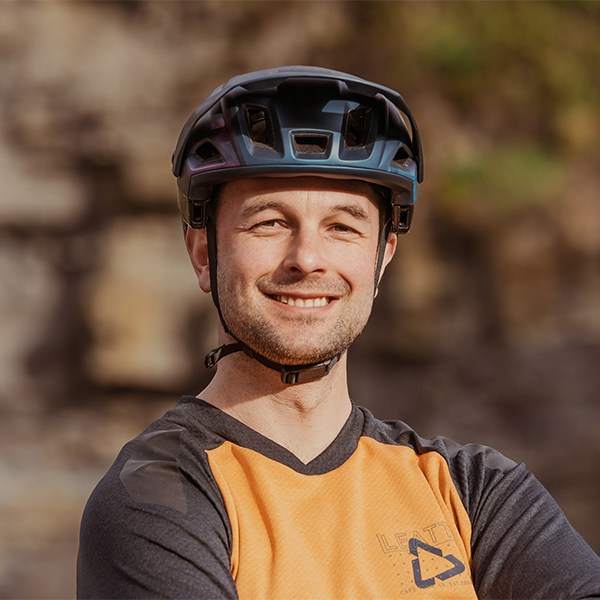The Agonist is claimed to be one part endurance race bike and one part go-anywhere trail rig. How has BMC managed to strike this balance and has it had to make compromises along the way?
Well, it says it's relaxed the geometry to tone down the aggressive body position needed on World Cup XC race rigs so that the bike’s at home over more types of terrain, and added a host of more trail-friendly parts, such as a dropper post and a 1x drivetrain.
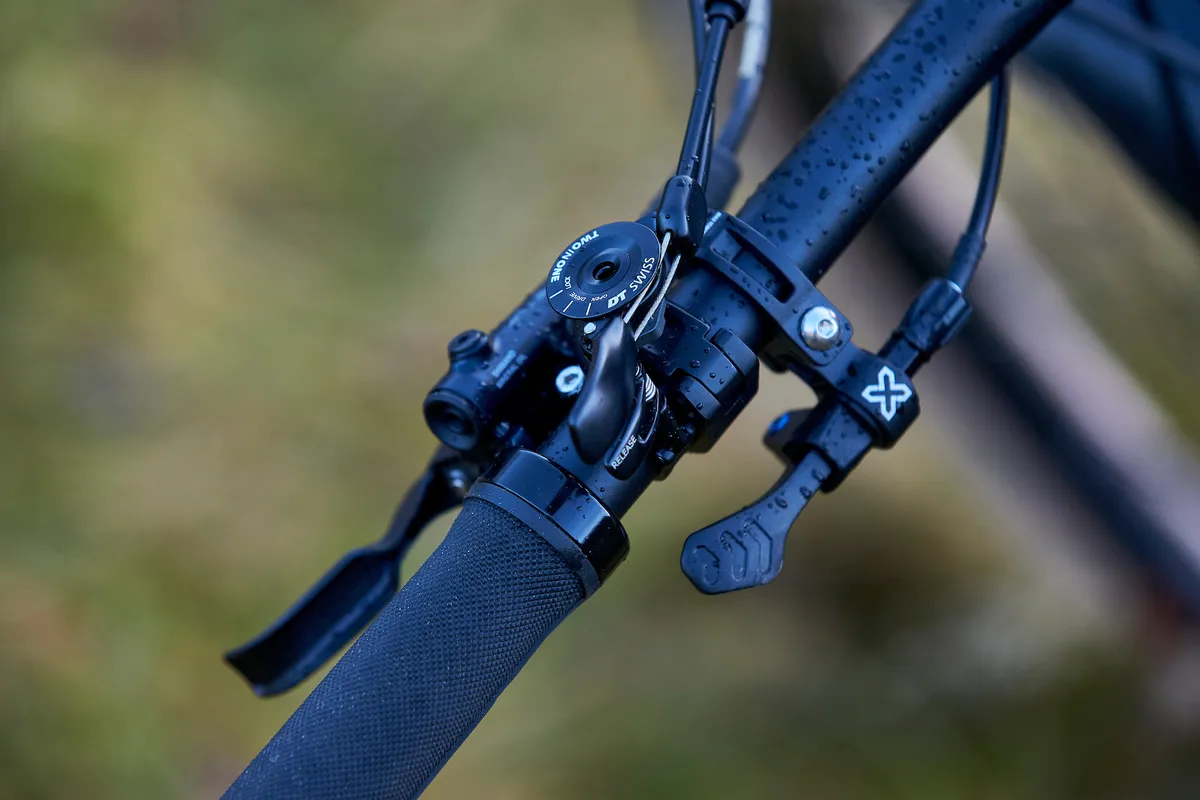
The gnarly XC bike sector isn’t new, though, and Scott’s Spark has lead the charge here, followed by a host of offerings from other brands including Trek’s Top Fuel and Specialized’s Epic Evo. So can the Agonist compete?
BMC Agonist 02 One frame and suspension details
Built around a carbon front-end and alloy rear-end, the Agonist 02 has 110mm of rear wheel travel driven by BMC’s APS dual-link suspension – seen across BMC’s range of full-sus bikes – with a virtual pivot point tuned for this bike’s specific intentions.
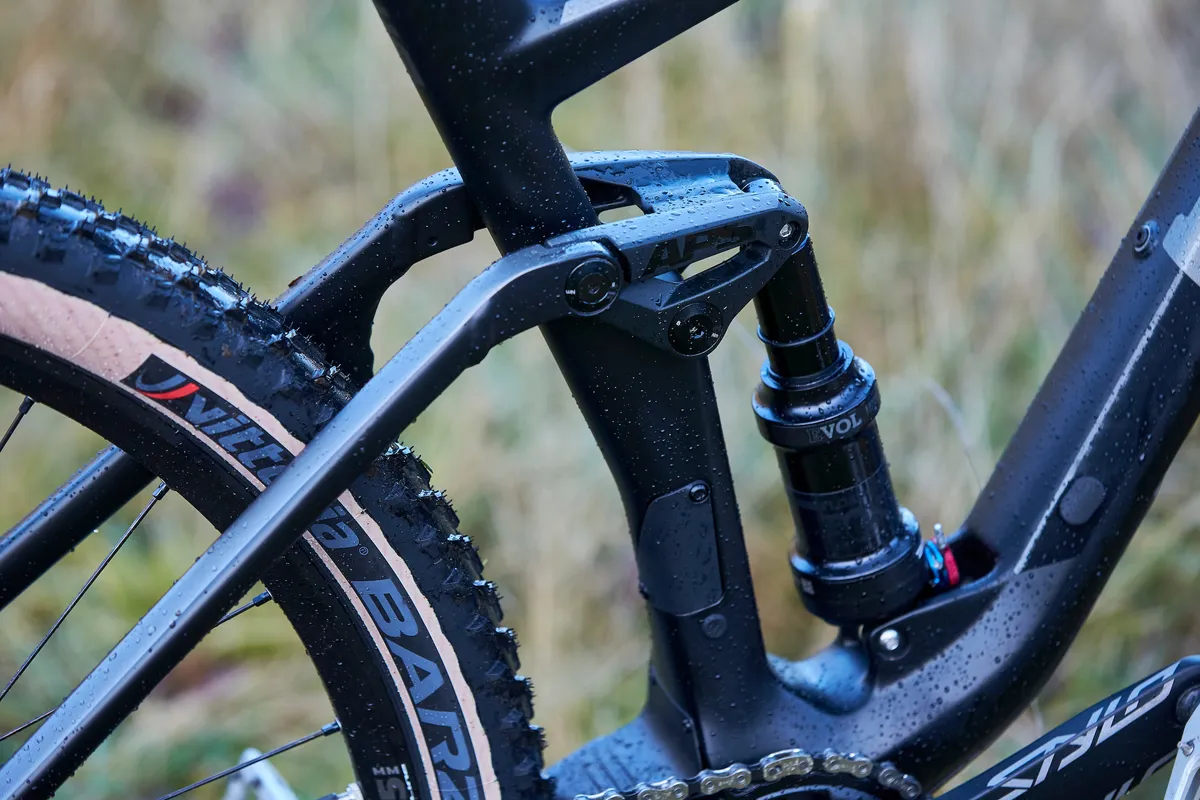
The Agonist’s suspension focuses on compliance under braking, small bump sensitivity and efficient pedalling.
It’s got internally-routed cables front to back, a single bottle cage mount on the top side of the down tube and an integrated down-tube protector.
For the old-school XC riders out there, there’s still the option to run a front derailleur, but the bike comes with a single front ring and internally routed dropper post.
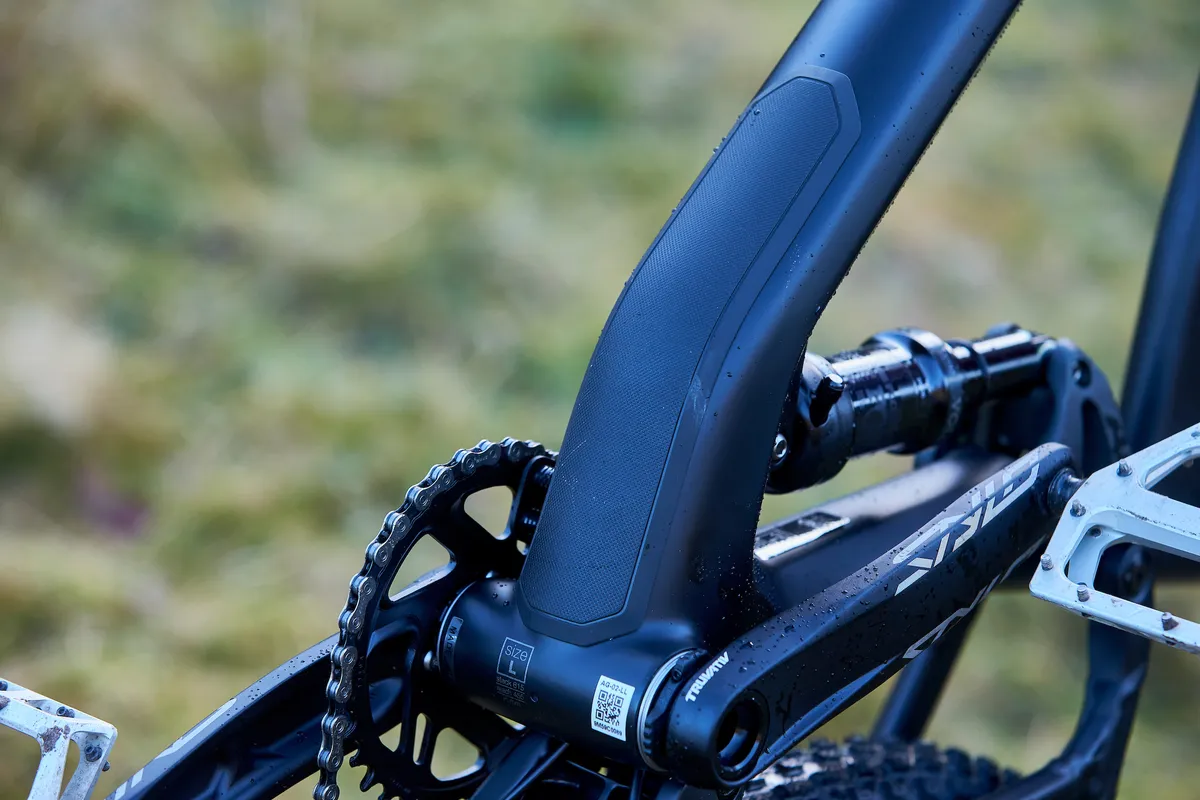
There’s also a nifty in-built mudguard on the bottom rocker link.
The rear axle is 12x148mm bolt-thru and it has a PF92 bottom bracket.
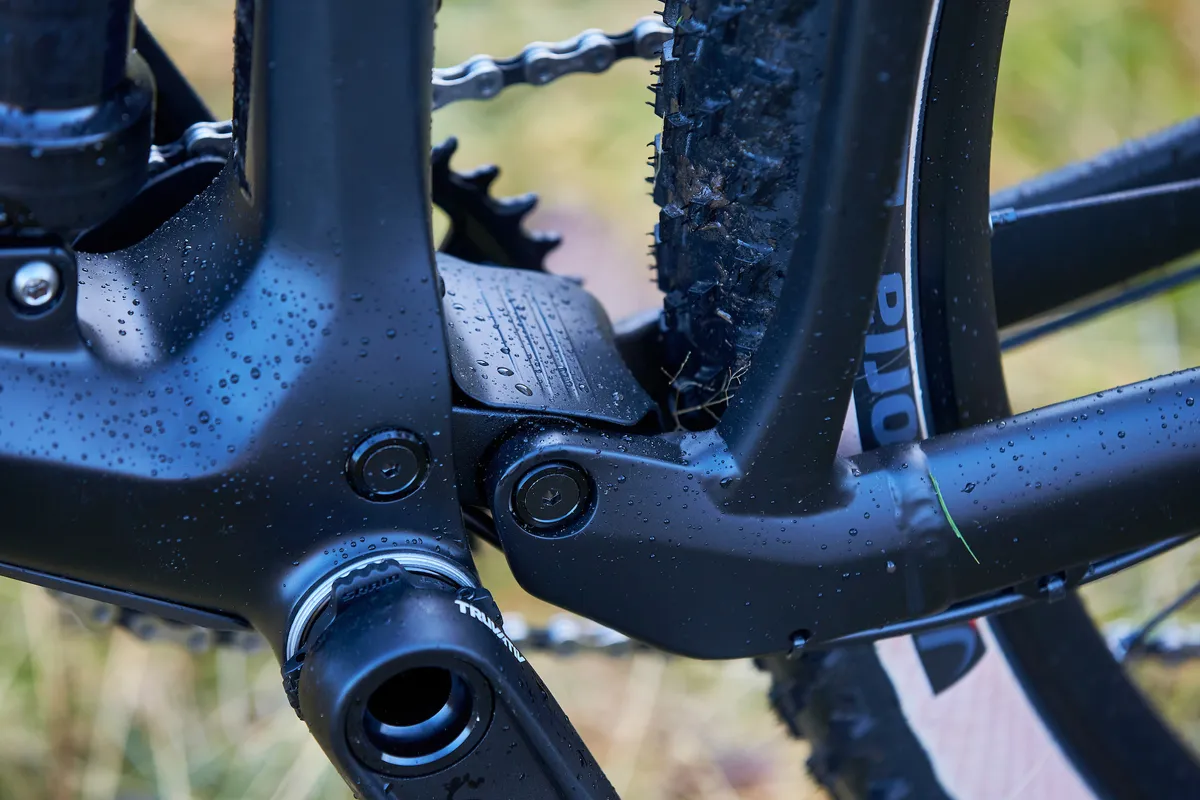
BMC Agonist 02 One geometry
Available in four sizes, I chose to test the Agonist 02 One in a size large for my 178cm tall frame. Although BMC’s website recommends the medium bike for my height, I didn’t feel like this would be adequate for my preferences.
The size large has a 634mm top tube, a 1,169mm wheelbase and a 455mm reach. There are 445mm chainstays and a 724mm front centre. The seat-tube angle is 73.75 degrees and the head-tube angle is 69.5 degrees.
None of these figures are particularly extreme and the BMC’s numbers look particularly XC-biased on paper.
- Sizes (* tested): S, M, L*, XL
- Seat tube length: 480mm
- Seat angle: 73.75 degrees
- Head angle: 69.5 degrees
- Top tube (effective): 634mm
- Reach: 455mm
- Chainstay: 445mm
- Wheelbase: 1,169mm
- Stack: 615mm
- Head tube length: 115mm
BMC Agonist 02 One specifications
Unlike its geometry, the spec is truer to its claimed intentions.
The Agonist 02 One is decked out in parts regularly seen on burlier bikes: up front, there’s a Fox Float 34 Step Cast Performance fork with the GRIP damper, a remote lockout and 120mm of travel.
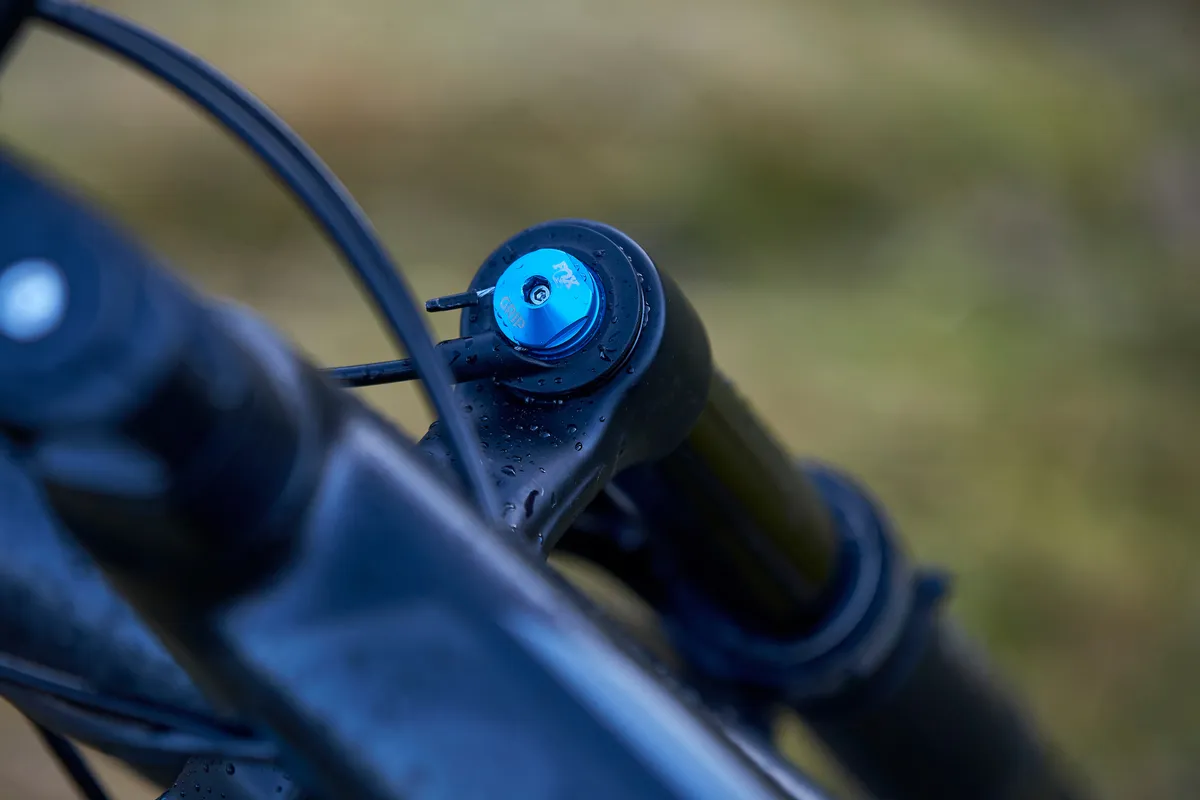
The rear suspension is damped by a Fox Float DPS Performance Elite shock with the EVOL air can, and the same remote lockout that controls the forks.
There’s a SRAM GX 12-speed 1x drivetrain with SRAM Stylo 7K cranks but Shimano Deore SLX brakes with 160mm rotors front and back.
The bar and stem are BMC branded but you get an X-Fusion Manic dropper and Fizik Antares R7 saddle.
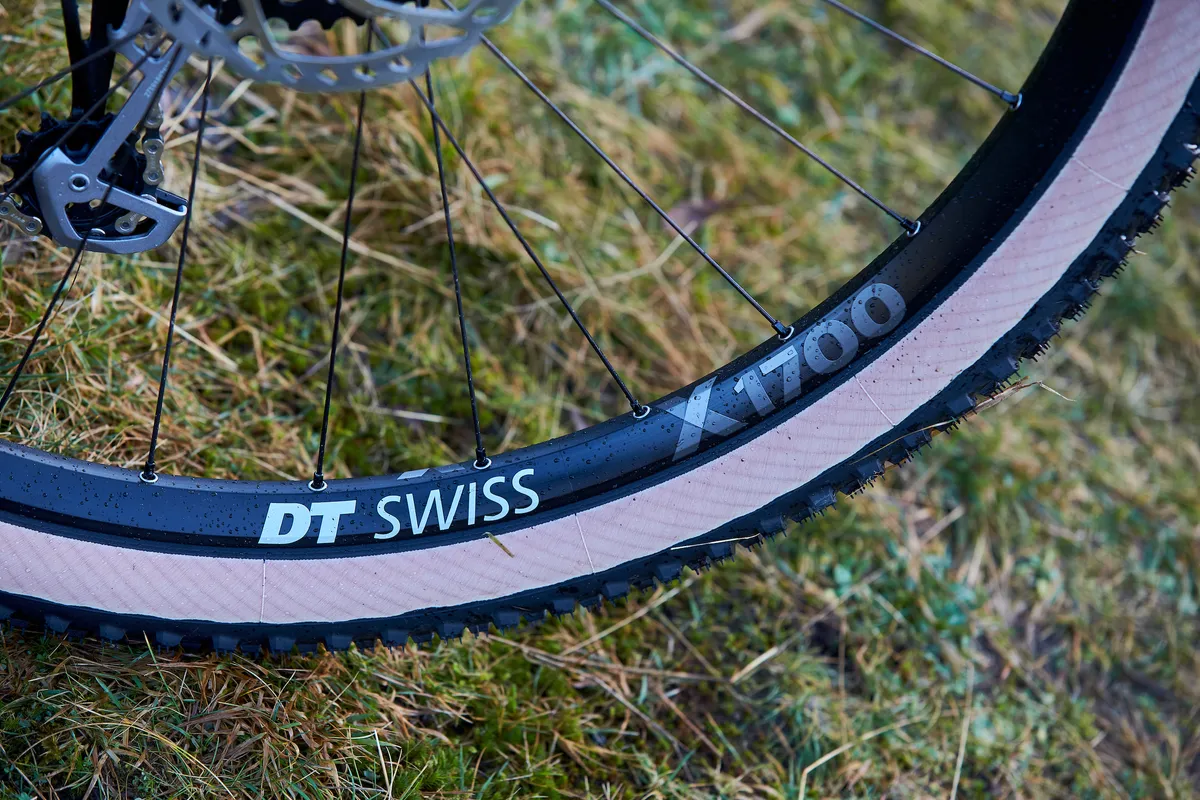
The wheels are DT Swiss X1700 and are wrapped in Vittoria Barzo 2.25in tubeless tyres. My size large test bike without pedals weighed 12.67kg.
BMC Agonist 02 One ride impressions
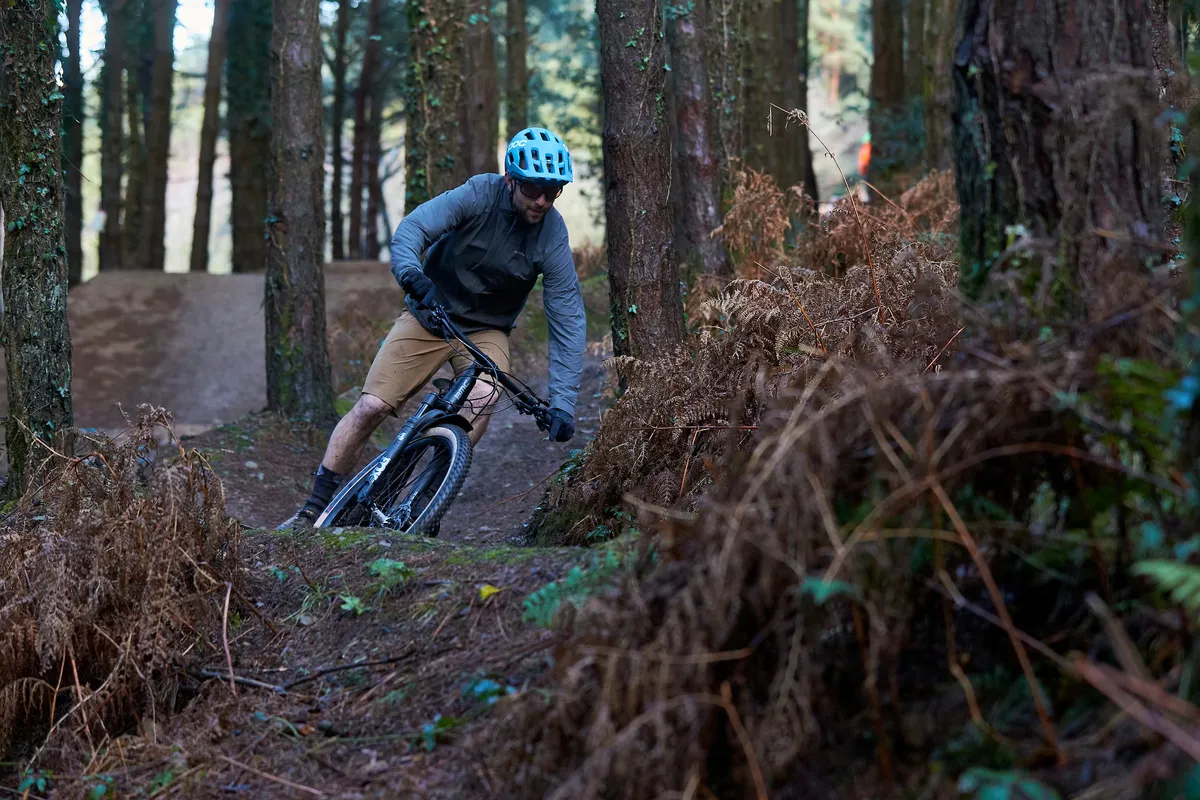
I tested the Agonist in some of the grottiest conditions the UK winter could produce. After plenty of rain, the natural trails were saturated, so I spent most of my time riding all-weather surfaces at trail centre loops, dodging puddles.
Setup wise, the suspension was easy to dial in with only air pressure to set spring rate and rebound damping to consider. I ran around 5 to 10 per cent sag on the forks and 10 to 15 per cent sag on the rear shock.
The cockpit was a bit trickier to get right thanks to the design of Shimano’s brake levers, which leave only a small section of bar between their clamp and the grip to attach shifters, droppers and lockout systems.
After a bit of jiggling, I managed to get the dropper remote, brakes, shifters and lockout lever all set up in the correct positions for my tastes.
BMC Agonist 02 One climbing performance
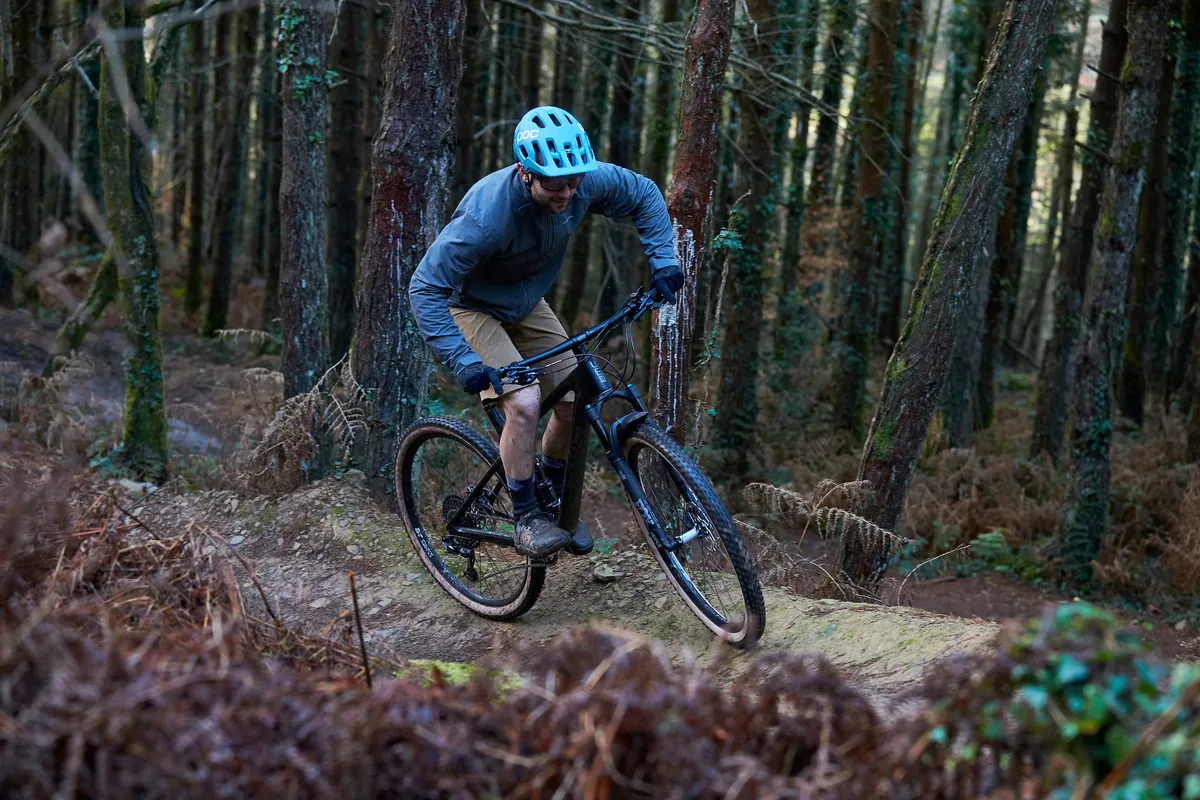
Heading up the first climb had me scratching my head. With the seat set parallel to the floor on flat ground, I felt like I couldn’t get far enough forwards when climbing seated.
It initially felt like the seatpost had a rearward offset and was pushing my weight too far back. After multiple rides and plenty of changes to the seat’s angle, I eventually realised that I wasn’t able to get my weight far enough over the front of the bike. This was because the seat tube angle was much slacker than I was used to and I hadn’t adjusted the seat forwards and nose down enough to compensate.
Once I’d set the angle at a particularly extreme position with the nose down and forward in the rails, I was able to get in a seated climbing position that made ascending more manageable and comfortable.
In fact, before I adjusted the seat correctly, the seat tube angle made the bike feel somewhat chopper-esque because of how far it put me over the rear wheel with the post at full extension.
Compared to other similar bikes, the BMC's 73.75-degree seat-tube angle is quite slack. Trek's Top Fuel has a 75.5-degree seat-tube angle in the high setting, Orbea's Oiz – arguably more XC-orientated than the Agonist – has a 75-degree seat-tube angle in the XC setting and Mondraker's F-Podium has a 75.1-degree seat-tube angle.
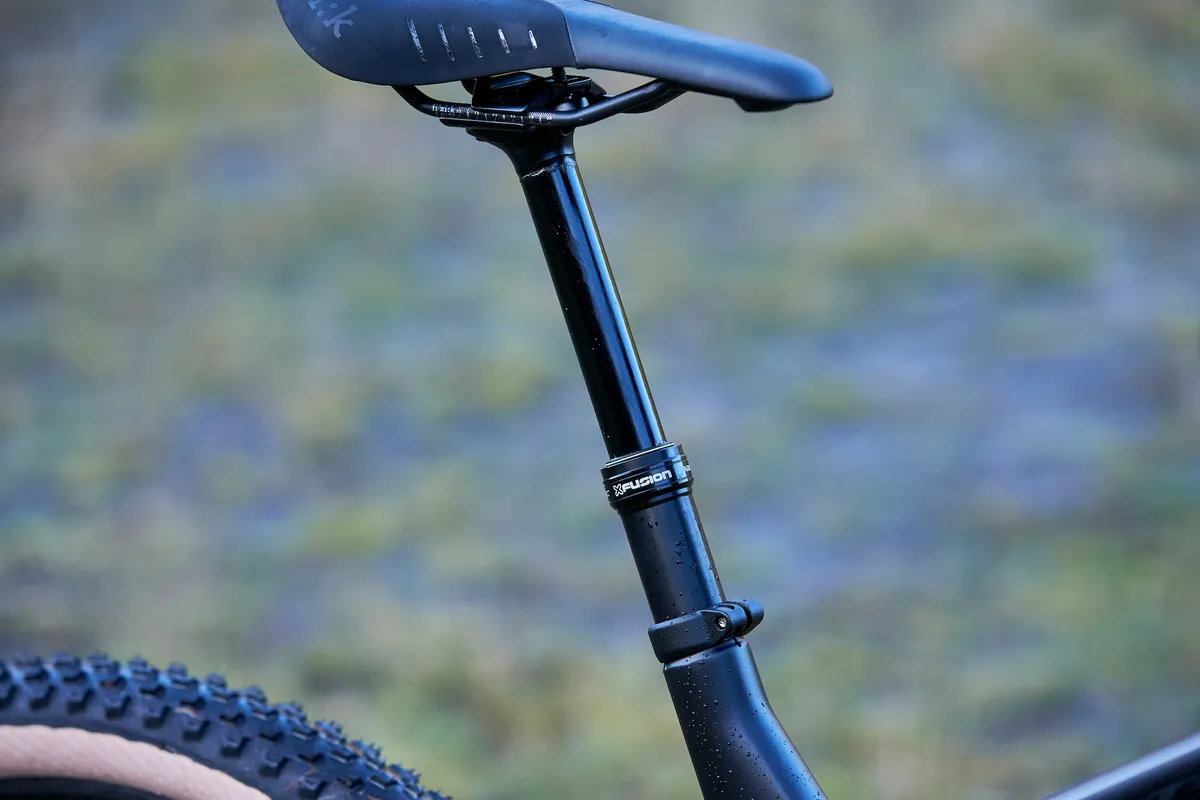
I did find the seatpost, even with its limited drop, struck a good compromise between going low enough to get it out of the way on the descents to high enough to be in the correct position on the climbs, without any manual adjustment.
The suspension lockout function worked well, and operating the remote lever to the fully locked position did make the suspension particularly firm – perfect for smooth ascents or long road drags.
However, I didn’t notice a big reduction in suspension bob between the trial and open modes, but the trail mode did provide less grip on flat, rough sections.
For that reason, I left the bike in the open mode for the duration of the test period unless I was pedalling along a smooth, flat surface.
BMC’s suspension is particularly sorted in this regard and it almost feels like it could do away with the complication and weight of the remote lockout system altogether.
If you want to totally lock-out the fork and shock, a simple flick of the lever on each unit wouldn’t be devastatingly inconvenient.
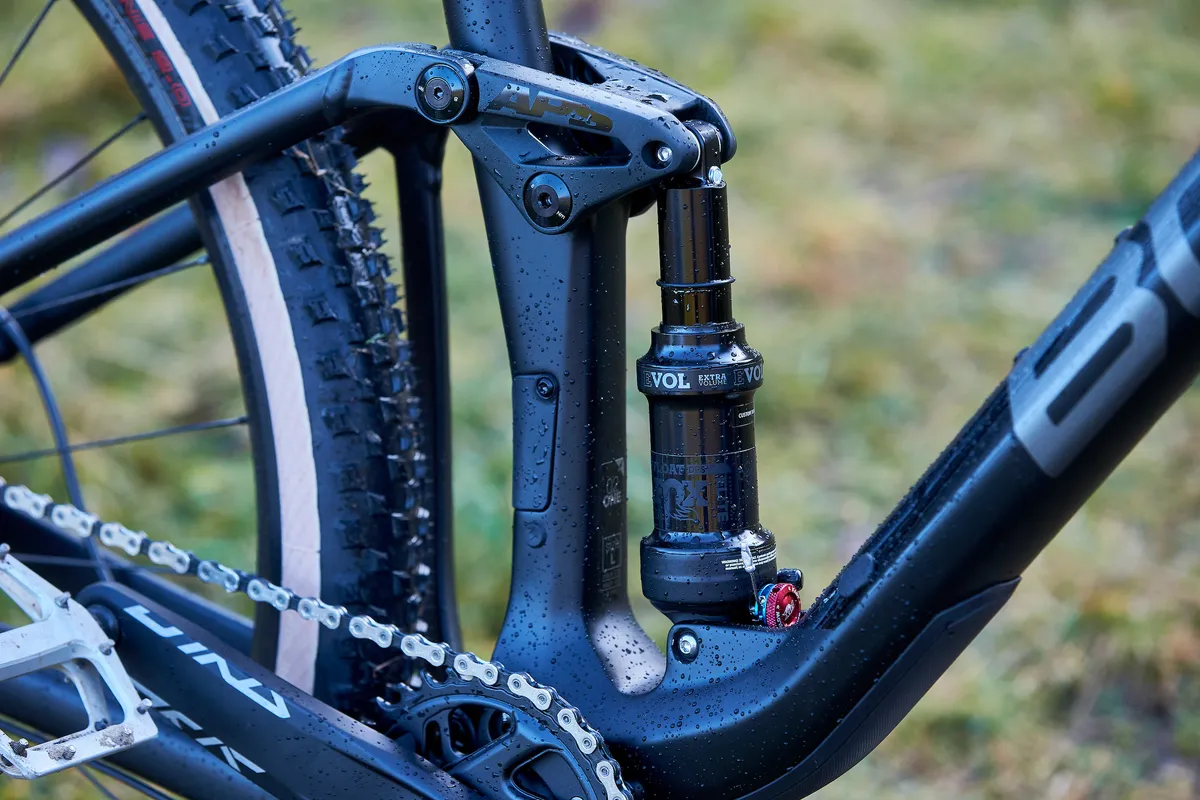
Overall, the bike certainly shifted well when I was pedalling hard without much power loss to frame flex or suspension movement.
The Vittoria Barzo tyres were a true disappointment providing patchy, unpredictable grip at best.
Testing on a particularly wet, but not boggy, more natural trail centre loop with roots and rocks made me feel like I had never ridden a bike before. I got increasingly frustrated by the tyres hindering my ability to hold lines I’d normally clean without much thought.
Even when ridden with care and meticulous line choice I couldn’t get them to grip and keep the bike pointing where I wanted.
This detracted from the whole riding experience and I think that they’re a compromise too far in the balance between grip, weight savings and rolling resistance.
I’d happily take a beefier tyre and sacrifice some weight for more predictable performance, especially on a bike that's touted as a bit of a do-it-all rig.
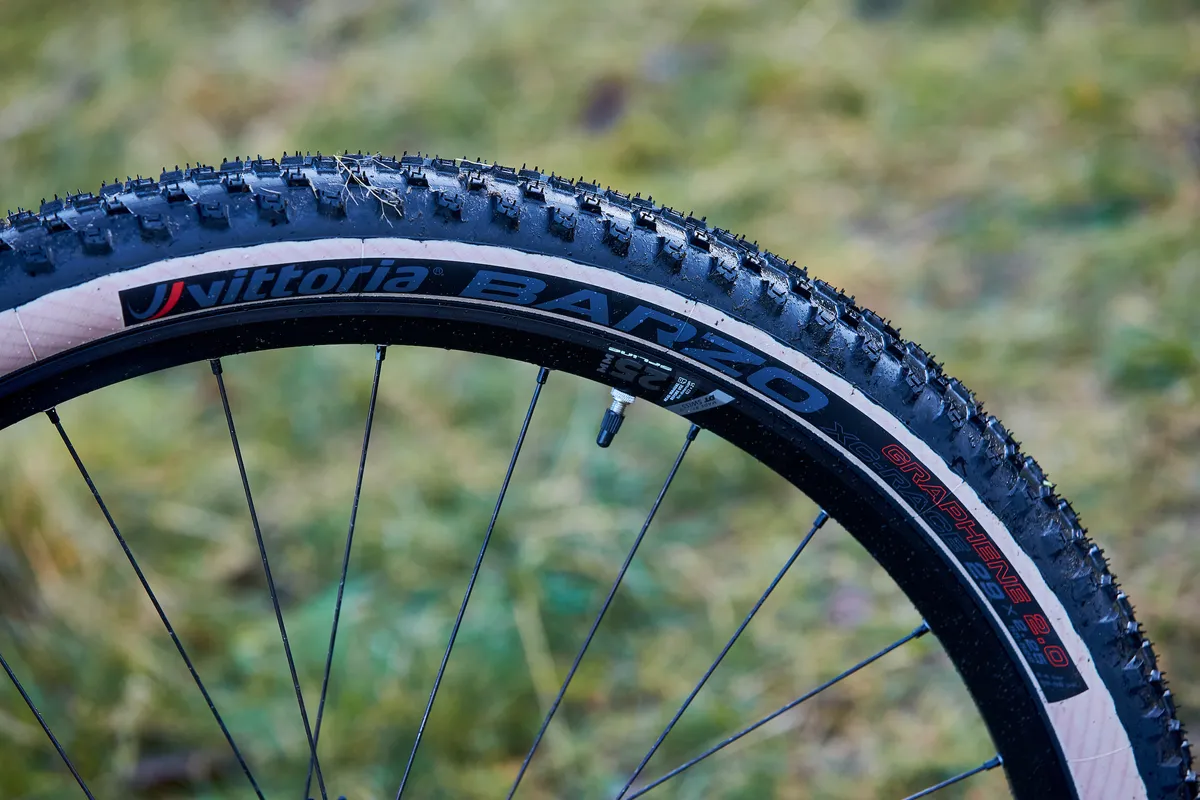
That said, I’m sure in the height of summer on dry and dusty trails they’d be fine, but then a gripper tyre would be more capable again. And, let’s not forget that even in BMC’s own words this isn’t an XC race bike. It should be capable of tackling pretty much any UK trail centre loop in its stock configuration, no matter the conditions.
Tyres are a relatively inexpensive upgrade though – compared to say a set of suspension forks – and they would be the first thing I’d change if I was buying this bike.
I also felt like the steering needed to be calmer on the climbs, especially around tight hairpin corners. The front could tuck if my weight wasn’t far enough back, but when positioned more rearward on the bike that chopper-like feeling of limited control I mentioned before came back.
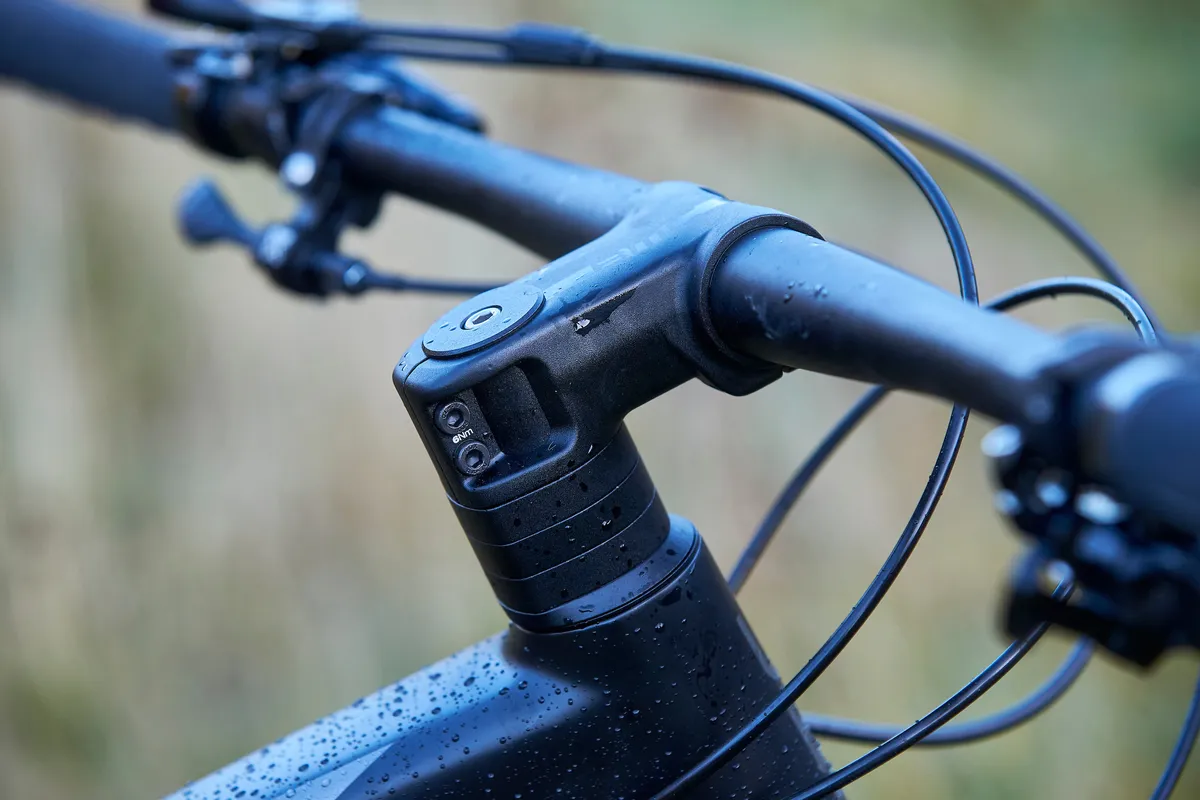
I put this down to a combination of the head angle being fairly steep and the seat-tube angle being especially slack.
This meant that little of my weight could be comfortably put through the bars when seated, reducing front wheel traction and creating a twitchy, hard to control ride on the climbs. The length of the stem also had an effect.
A longer stem means more weight is over the front of the bike, reducing twitchiness. A shorter stem will position the rider in a more upright position, reducing the amount of weight on the front wheel, increasing twitchiness.
In the case of the BMC, the stem wasn't long enough to counter how far back my weight was – created by the slack seat tube angle – pulling my body forwards and lower over the bars. Instead the handling just felt a bit nervous.
BMC Agonist 02 One descending performance
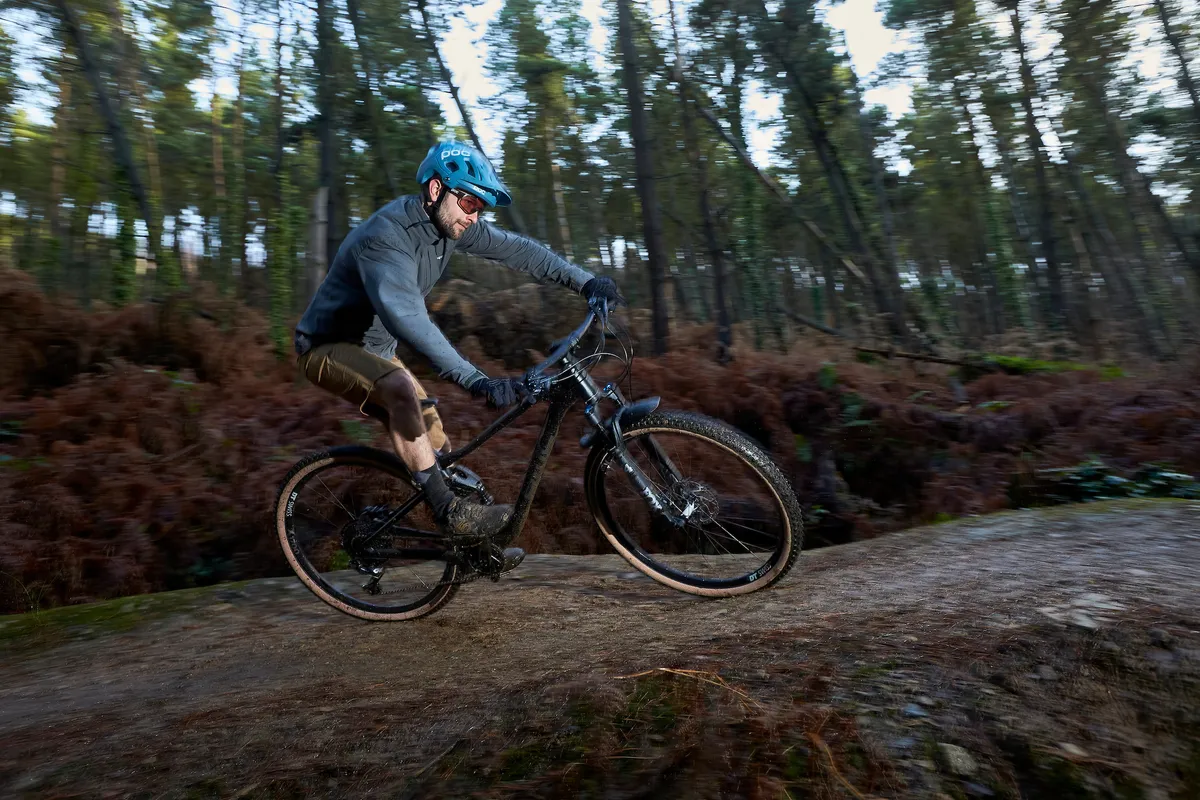
I was pleasantly surprised by how much the bike had to give when heading downhill, considering its 69.5-degree head-tube angle.
I rode the bike before checking out the geometry figures and was convinced the head angle felt slacker than its claimed number.
The bike responded well to a heels-down style of riding and the suspension offered plenty of support in turns and through holes. This made it much easier to commit and push the bike faster and harder.
I do think that it’s important to not forget that it is an XC bike, but with that in mind, its descending performance is better than I expected. Granted, it’s not quite on the same level as a Scott Spark, but it's still impressive.
Like the climbs, the most limiting factor was the tyres. They really held the bike back when riding steeper sections or more technical bits of trail where I felt the chassis had more to give.

The suspension tune hits a great balance between support and smoothness, making it easy to carry speed over rough sections without the back wheel feeling like it’s getting hung up over bigger bumps.
It was also easy to generate speed by pumping and pushing through bumps and it was rewarding to not have to rely on pedal strokes to constantly keep the bike moving. The frame inspired confidence and felt stiff and accurate, too.
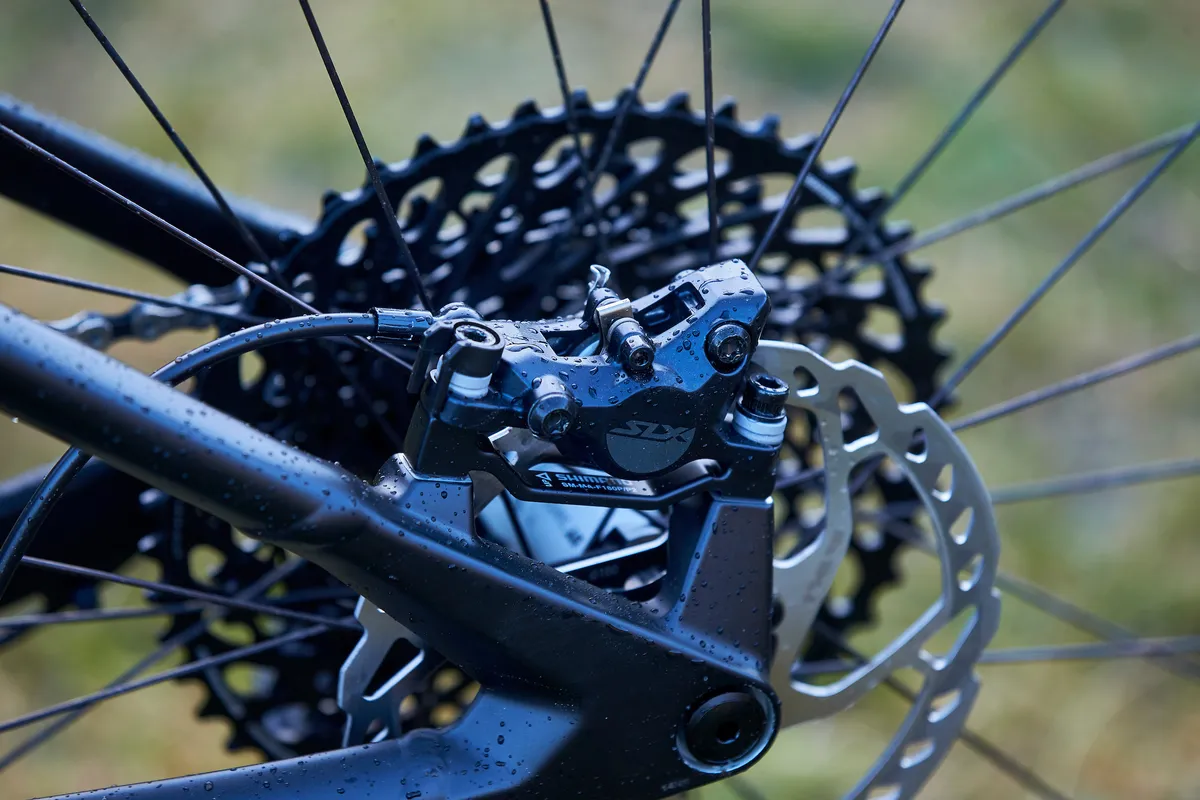
The Shimano SLX brakes did suffer from a changing bite point on the descents, but this problem is well documented and not exclusive to the SLX model.
BMC Agonist 02 One bottom line
Although the Agonist isn’t as capable and trail-ready as Scott’s Spark, it’s still a good fun, fast and accomplished XC bike.
If you’re an XC rider that likes to dabble in techier trails, then it’s not going to feel under-gunned unless you want to ride big terrain.
The seat-tube angle could do with being steeper and this would help with the handling on technical, tight climbs.
It’s unfortunate the tyres offer such unpredictable grip because the rest of the spec seems to hit the sweet-spot between XC weight saving and trail riding prowess.
If you’ve got £5,000 to spend and want a bike that performs on a wide variety of trails out of the box, the Scott Spark is a safer bet.
Product
| Brand | Bmc |
| Price | €4799.00, £4899.00, $5199.00 |
| br_whatWeTested | BMC Agonist 02 One |
| Weight | 12.67kg |
Features
| Fork | Fox Float 34 Step Cast Performance GRIP 120mm (4.72in) travel |
| Stem | BMC MSM 01 |
| Chain | SRAM GX |
| Frame | Carbon |
| Tyres | Vittoria Barzo G2.0 tubeless 2.25in f & r |
| Brakes | Shimano MT-501 160mm rotors |
| Cranks | SRAM Stylo 7K |
| Saddle | Fizik Antares R7 |
| Wheels | DT Swiss X 1700 Spline hubs with DT Swiss X 1700 25 rims |
| Shifter | SRAM NX 12-speed |
| Cassette | SRAM GX 10-50t 12-speed |
| Seatpost | X-Fusion Manic |
| Handlebar | BMC MFB 02, 750mm |
| Rear shock | Fox Float DPS Performance Elite, EVOL |
| Bottom bracket | SRAM GX |
| Available sizes | Small, medium, large, extra-large |
| Rear derailleur | SRAM GX 12-speed |
